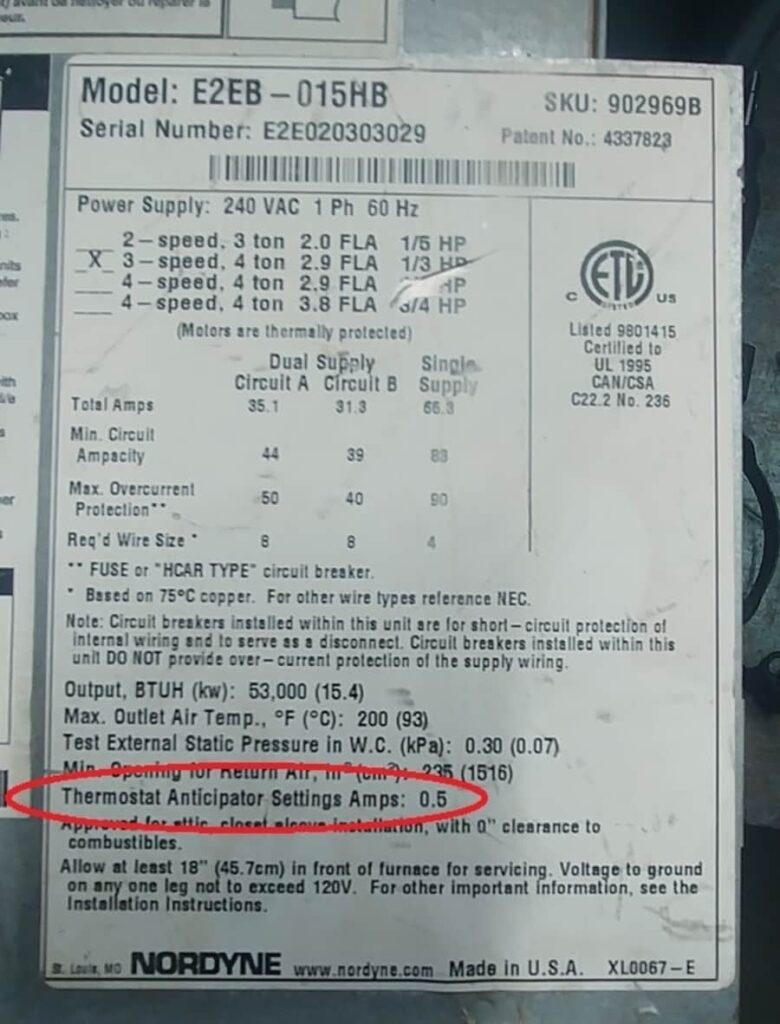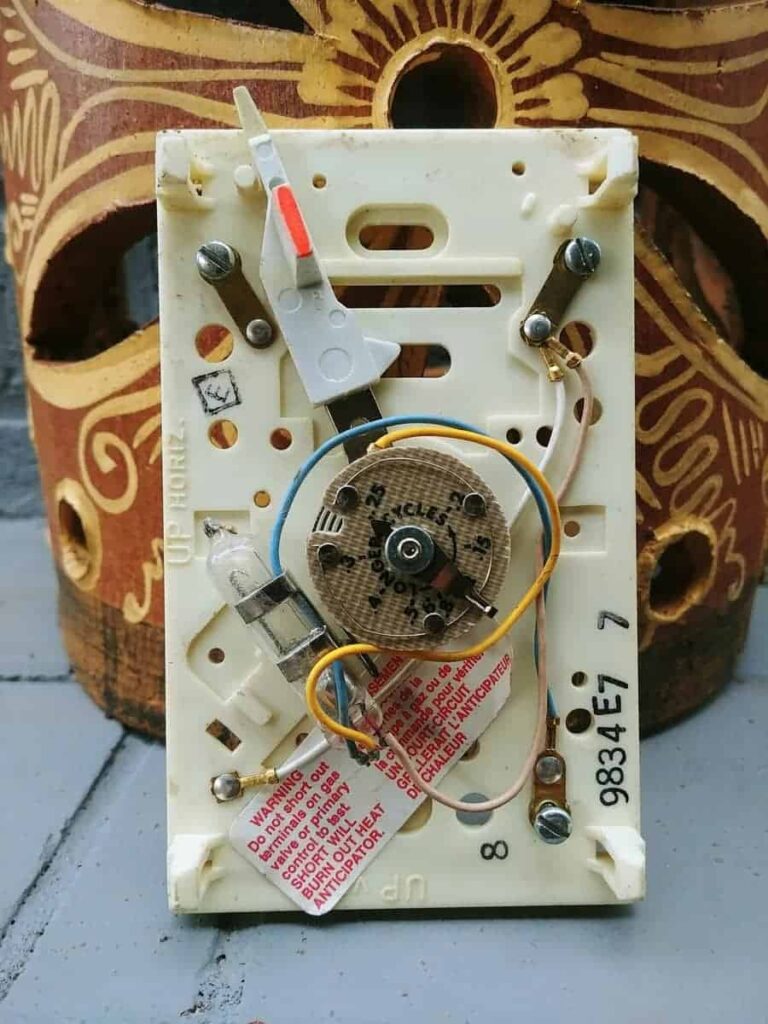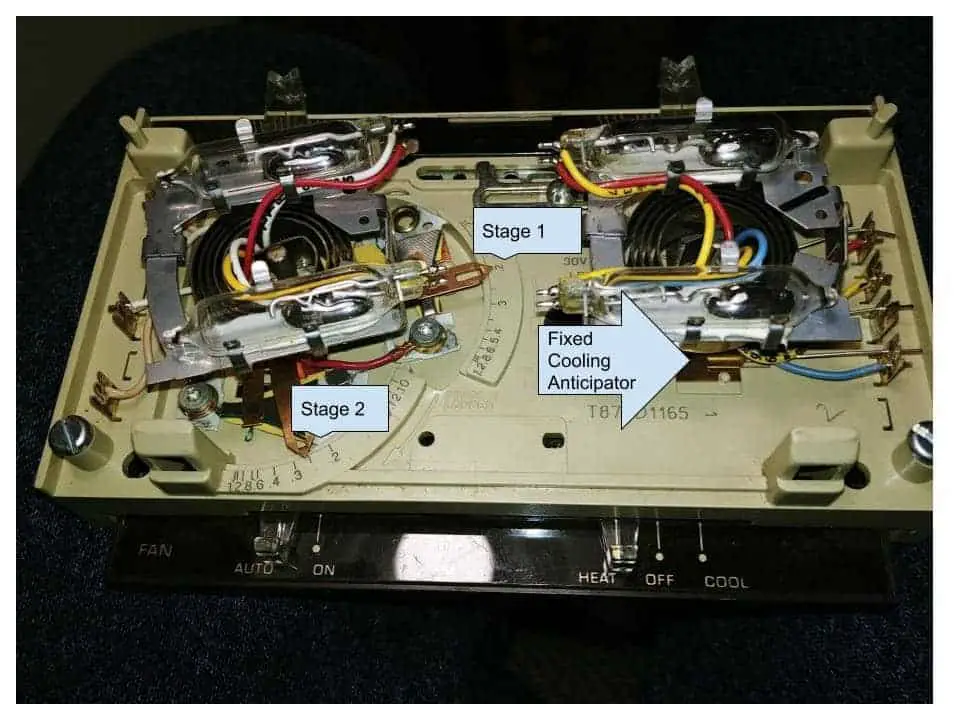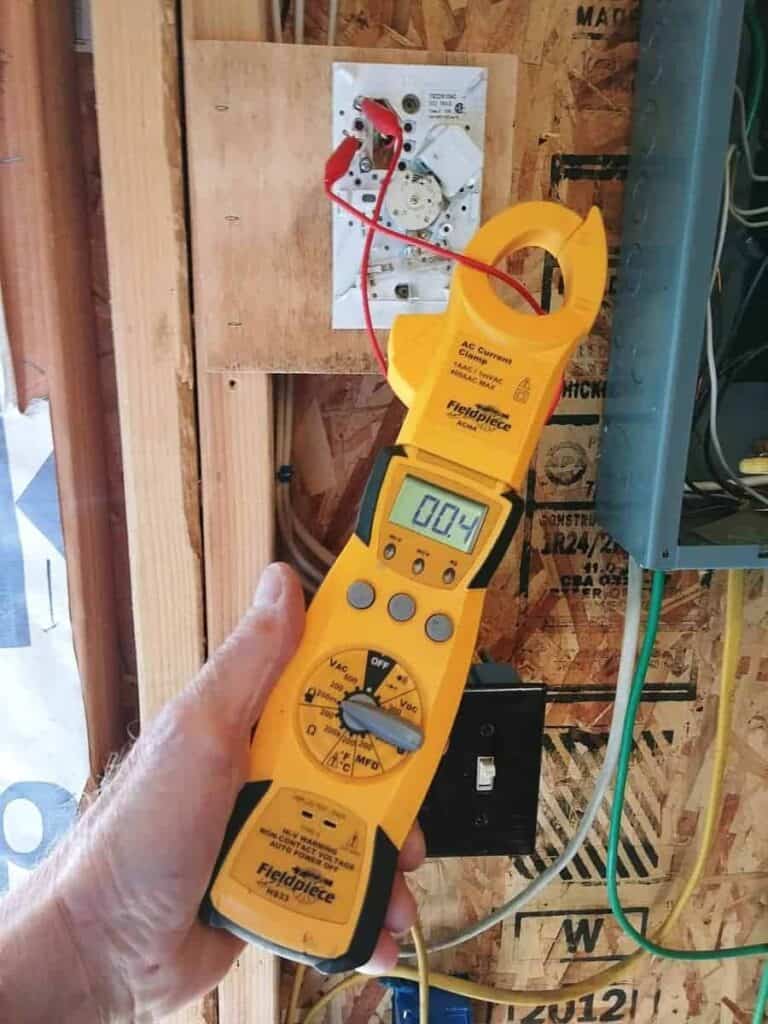If you have a thermostat with a heat anticipator and are experiencing dramatic temperature swings, you have come to the right place.
The heat anticipator in simple mercury or snap action thermostats is adjustable. I can teach you here how to adjust your heat anticipation safely. You’ve probably wondered how to adjust a mechanical heat anticipator on a thermostat.
Whether your furnace is electric, gas, or oil doesn’t matter, and you have a non-digital thermostat, and with the cover off, you can see a small dial inside that reads “longer cycles.” You can make some simple adjustments.
Turn the dial counterclockwise for longer cycles for furnace-on time and clockwise for shorter cycles. I’ll teach you how to adjust your heat anticipator to maximize your furnace efficiency using two methods in this article.
One sort of flying by the seat of your pants and the other more technical using a meter to measure amperage. A shortcut (not available on all furnaces) is to look at the label. Some manufacturers put the setting in writing right on the label.

A heat anticipator anticipates the room temperature before it gets uncomfortable. It is a resistor you adjust, like turning your radio up and down. When you change a heat anticipator, you turn the heat up and down.
Because these loads vary from furnace to furnace, the thermostat must have an adjustable feature that compensates for these different loads. That adjustable feature is called an anticipator.

Here are the symptoms of a maladjusted heat anticipator.
- You get too hot, and then you get too cold.
- The furnace cycles on and off, and you are never warm enough.
If you’re experiencing symptom number one with the wild temperature swings, the anticipator is probably set at the more extended cycle position of .8 amps or close to it.
If number two is your problem, then the anticipator will be at a setting closer to .15 amps.
When reading the setting, be sure you are looking at the number the arrow is pointing towards, not the end touching the small wire circled around the little round fiberboard holding the thing together.
But then I removed this thermostat, which has no arrow for the anticipator setting. You may need to study up close to understand the individual construction of the anticipator in the particular thermostat you are adjusting.
Also, pay attention to the dust collected on the bi-metal toward the bottom of the image below. If your thermostat is in this condition, get a can of air or something to blow it out.
Dirt and grime can interfere with a thermostat’s operation. See the dust collected on the bi-metal in the lower left of the image below.

Which Anticipator Is Adjustable, Heat Or Cool?

The image above is a good representation of which anticipator is adjustable. The arrows pointing at stages 1 and 2 are the adjustable anticipators for heat. Although a little hard to see, the arrow labeled “fixed cooling anticipator” is pointed directly at a small resistor tucked under the mercury bulb mounting plate.
Why Is The Anticipator Setting Important?
What should a thermostat differential be set at? The correct anticipator setting is the one that keeps your home at the temperature you set the thermostat to heat. That’s how you achieve the ideal thermostat swing.
Probably one of the most neglected and least understood settings in an installer’s setup of a new system. Just a guess, but I would say that nearly half of the service calls I make that have mercury bulb or snap action (non-digital) thermostats have never had a meter put to them to test the setting.
Some furnaces have the anticipator setting listed on the wiring diagram or somewhere within the furnace cabinet.
Most newer systems have upgraded to digital thermostats that are preset at the factory. Within the setup of most higher-end digital stats, there is a cycle rate adjustment, which is essentially the same as an anticipator. Technical support for those thermostats will likely suggest that doesn’t need to be adjusted.
How Would A Thermostat React Without An Anticipator?
Good question. It is excellent because it will help you understand why a thermostat needs an anticipator. When a thermostat has a call for heat (which means the switch in the thermostat turns on the furnace), there is a time lag. It may take a minute or two for the furnace to heat up and the fan to kick on.
Then, it takes a bit of time for the warm air created by the furnace to heat the ductwork and deliver warm air into the structure or home. While this is happening, the house is still getting colder, maybe by a degree or two.
That’s why we need anticipators. To compensate for the lag time. It turns on the furnace before you sense the room getting cold. Make sense? I hope so.

Following the above chart, starting at number one, your home begins to cool down, and the thermostat says to turn on some heat somewhere along the red line without an anticipator.
When the furnace starts, and the ducts warm up, you may feel a chill when you get to number two.
Heading up to number three, it will get warm, and when it finally shuts off at number three, and the fan keeps running to cool down the elements or heat exchanger, you may start taking off some clothes.
But follow the black wavy line (sorry, it’s not a pretty line; I’m working on my graph skills). The gap between on and off is much smaller, meaning the temperature in the room doesn’t swing as wide, and you are much more comfortable with an anticipator in your thermostat.
How Should You Accurately Determine The Heat Anticipator Setting On A Room Thermostat?
Aside from moving the setting up and down until you reach a satisfactory comfort level, there is a technical way to adjust the anticipator. Accurately adjusting a heat anticipator on a thermostat requires an amp probe or am-meter, as they are sometimes called.
Care needs to be taken if you intend to use a jumper and a meter to measure heat anticipation. Remove one of the wires, usually red or white. These are typically labeled “R” or “W” on the thermostat. If you jump the R and W without removing one, you risk burning the small resistor wire in the anticipator.
With the thermostat wires removed, jump the wires leading to the furnace. Place a digital amp-meter over the wire and wait for the furnace, fan, and all to come on.

If you want to be a handyperson, you have to have a multimeter. Knowing how to test for electricity is much safer than guessing what’s there.
A customer recently called me about a breaker that kept tripping, and the breaker was running very hot. I put my amp meter around the wires to the furnace, and the amp draw was well within the limits of the breaker.
As it turned out, every wire in his panel was loose. A lot of heat can be created by loose wiring. This could have been a real problem if it was left unchecked. If you want to be that handy person and learn to use a meter, I’ve researched a few multimeters that can do the job without breaking the bank. Take a look at Amazon at this Fieldpiece Multimeter (#ad). I have two of these, one for backup.

